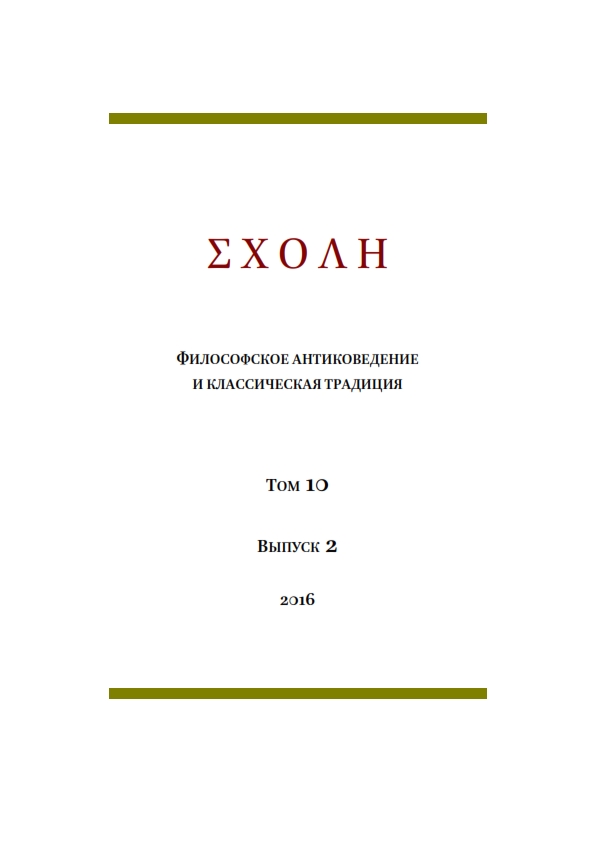ИЗМЕРЕНИЕ ВРЕМЕНИ В АНТИЧНОСТИ: КЛЕПСИДРА И ЕЕ ОСОБЕННОСТИ (НА МАТЕРИАЛЕ ПИСЬМЕННЫХ СВИДЕТЕЛЬСТВ И АРХЕОЛОГИЧЕСКИХ ДАННЫХ ИЗ АМФИАРАЙОНА)
MEASURING TIME IN ANTIQUITY. CLEPSYDRA AND ITS PECULIARITIES (ON THE BASIS OF LITERARY TESTIMONIES AND ARCHEOLOGICAL DATA FROM AMPHIAREION)
Author(s): Anna AfonasinaSubject(s): Philosophy, Fine Arts / Performing Arts, Architecture, Special Branches of Philosophy, Philosophy of Science
Published by: Новосибирский государственный университет
Keywords: clepsydra; Amphiaraus; ancient medicine; measuring; standards; Hippocratic corpus; Herophilus; Galen;
Summary/Abstract: The article discusses an episode in the universal history of metrology and standardization. On the basis of literary testimonies and archeological data the author first outlines the history of development of various types of the water clocks, clepsydra. Special attention is paid to the usage of clepsydra in public life (esp. in legal proceeding) and in medical practice. Then, considering the massive water clock from the sanctuary of the healer-god Amphiaraus in Oropos author shows that in the 4th cent. BCE the water clocks became an essential part of social life, and demonstrates the ways they calibrated the device according to a 24-hours scale. The author suggests that the massive water clock, designed for continuous measuring of time, subdivided at equal hours, was built at the sanctuary of Amphiaraus for medical purposes. Such hypothesis can be confirmed by a series of passages from the Hippocratic corpus, where the word “hour” is actually introduced, as well as by two more testimonies from the medical practice of Herophilus and Galen.
Journal: ΣΧΟΛΗ. Философское антиковедение и классическая традиция
- Issue Year: X/2016
- Issue No: 2
- Page Range: 419-436
- Page Count: 18
- Language: Russian

